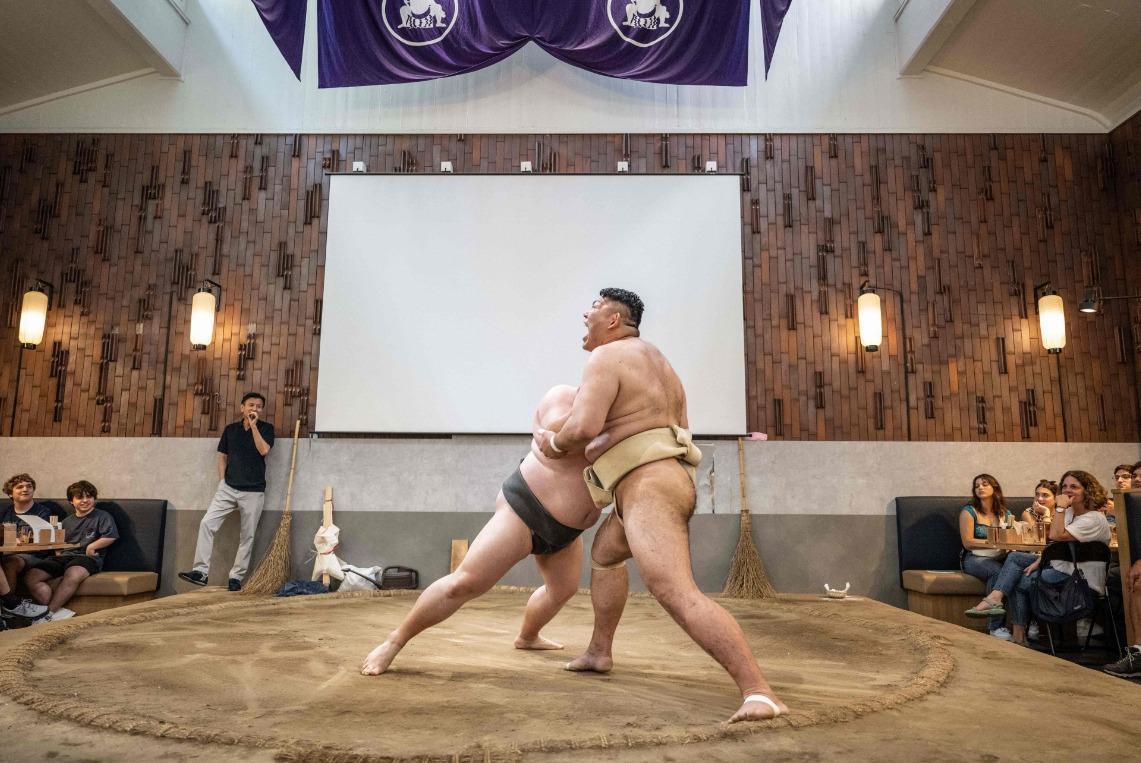Renewed interest in sumo proves big pull for tourists
TOKYO

Their interest piqued during COVID lockdowns and by a new Netflix drama, a fresh rush of foreign tourists are flocking to Japan for a look inside the insular world of sumo.
Japan's national sport, hundreds of years old and steeped in tradition, has long been a source of fascination outside the country, but those in the industry say interest has spiked in recent years, with some making the most of the new attention.
At a recent lunchtime "performance," two imposing sumo practitioners strutted their stuff in a Tokyo restaurant full of cheering tourists.
Afterwards, the spectators took selfies with the hulking athletes and donned padded sumo costumes and wigs to try their hand at the ancient art in a bout against retired professionals.
Tickets for the thrice-weekly event, which includes commentary in English and a slap-up meal, go for 11,000 yen ($76) each and were sold out for the following six weeks.
Former amateur sumo wrestler John Gunning, who competed for his native Ireland and commentates on Japanese television, said there has been a "huge increase" in the sport's popularity abroad over the last five to 10 years.
But that popularity grew even more during COVID, when people stuck in lockdown explored new interests.
And the release this year of "Sanctuary," a new Netflix series set in the world of sumo, also helped to introduce the sport to a new audience.
"I'm seeing a lot of people saying that that was their first exposure to sumo," Gunning told AFP.
The Japan Sumo Association last year also launched an English-language YouTube channel, "Sumo Prime Time," whose videos rack up tens of thousands of views.
Ken Miller, 68, shows groups of American tourists the area of Ryogoku, a mecca for the sport, including the Kokugikan arena. Each one pays several hundred dollars for the experience, and he says he is booked up for the next year.
Three times a year, in January, May and September, Kokugikan hosts the top stars of sumo in national tournaments in front of more than 10,000 cheering fans.
Tourists have long been able to visit the hallowed interior of a "heya," one of the traditional "stables" where sumo wrestlers live and train according to strict traditions.
But because of the growth in interest, many stables have banned individual visits and only allow group tours booked through an agency, said guide Yuriko Kimura.
















